
 |
Eager Space | Videos by Alpha | Videos by Date | All Video Text | Support | Community | About |
|---|


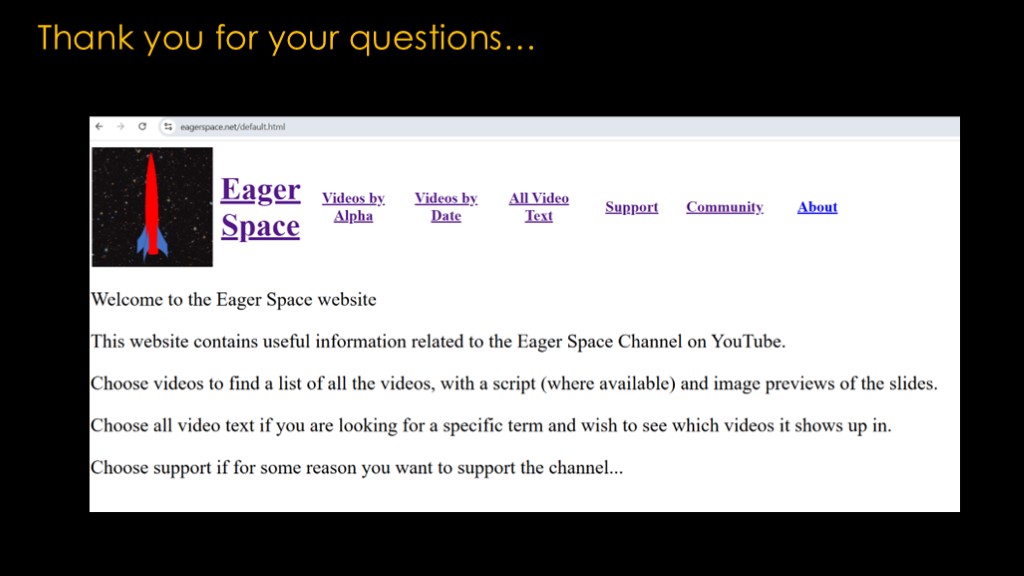
Thanks to everybody who asked questions.
Many of the answers are in videos that I've done in the past. You can find past videos by going to eagerspace.net and searching around.
Onto the questions
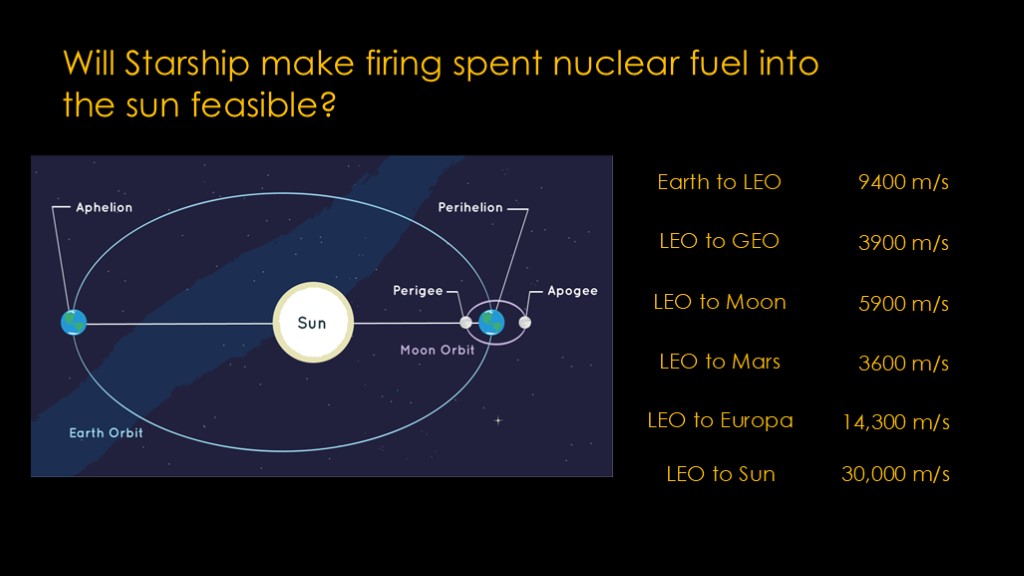
This is a fun one.
We look at how hard it is to get from one place to another in terms of the delta v, measured in meters per second.
It's roughly 9400 meters per second of delta v to get to low earth orbit. Once there, another 3900 to get to geosynchronous orbit, 5900 to land on the moon, 3600 to land on Mars, and a whopping 14,300 meters per second to land on Europa.
To get to the sun, we have to cancel out the rotation of the earth around the sun, which is a bit over 30,000 meters per second of delta v.
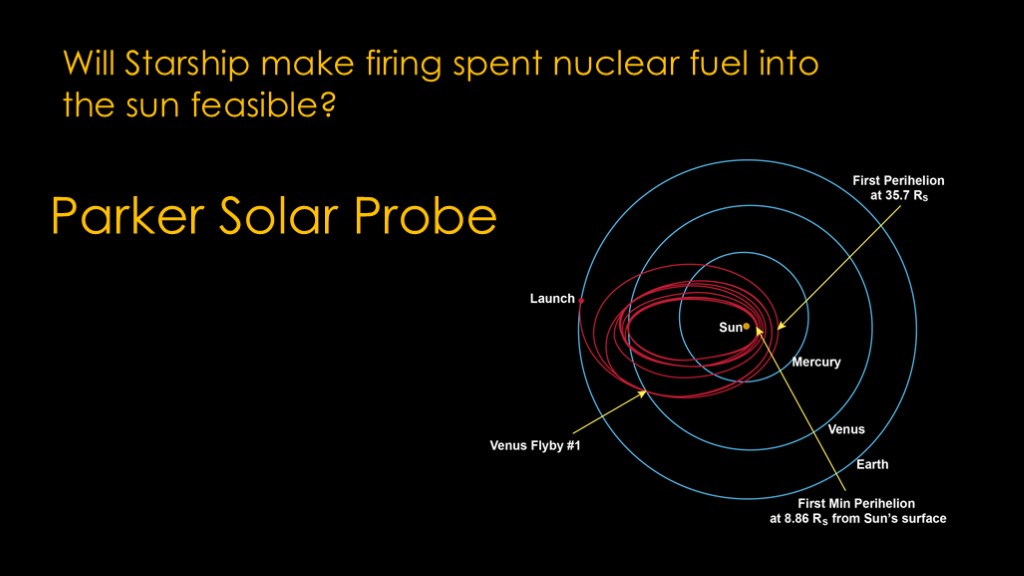
The only mission that has come close is the Parker solar probe, and it does 7 close flybies of Venus to lose enough energy to get into its final orbit.
So the answer is "no".
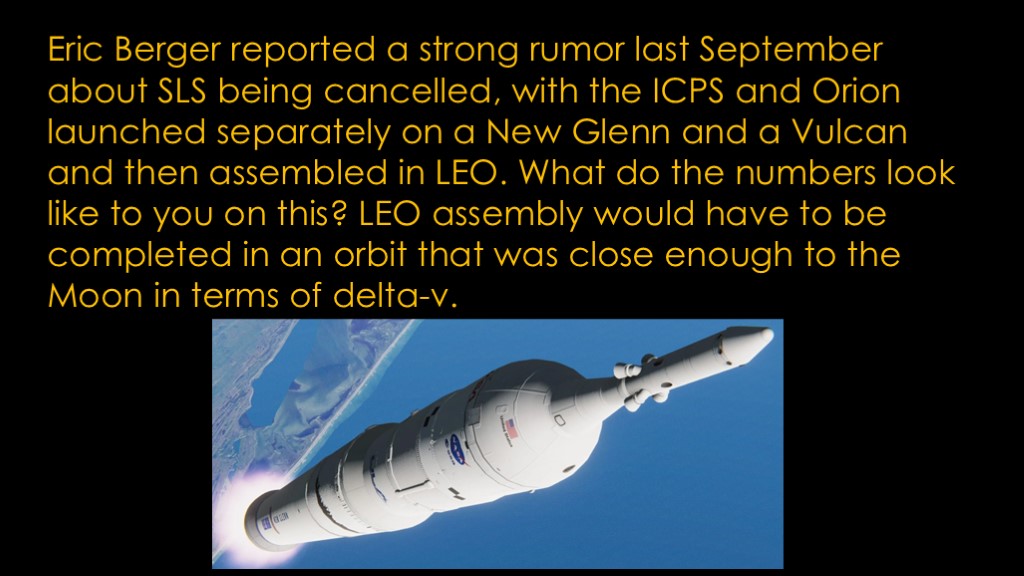
Looks similar to the constellation architecture. I'm too lazy to run numbers here, but I don't think the ICPS is a great choice for this as it's pretty wimpy and there are only two of them available. Centaur V would be a better choice.

My guess is probably not - most current engines have anti-pogo systems built into them - but it could be possible.

I think there's long term potential there and I do think there's probably a market there, though I'm not at all confident that there's a long-term space station market.
The NOVA payload is currently specified as 3-5 tons to LEO reusable, and that seems pretty tight for converting the second stage into a crewed capsule. Maybe an upscaled version.

Currently, congress seems very uninterested in space stations after ISS. NASA and the possible commercial providers have been unable to come up with a model that makes financial sense. At this point, it doesn't look very good.
Starship might change that, but I think there's a different model that might make more sense (yes, that's a teaser...)
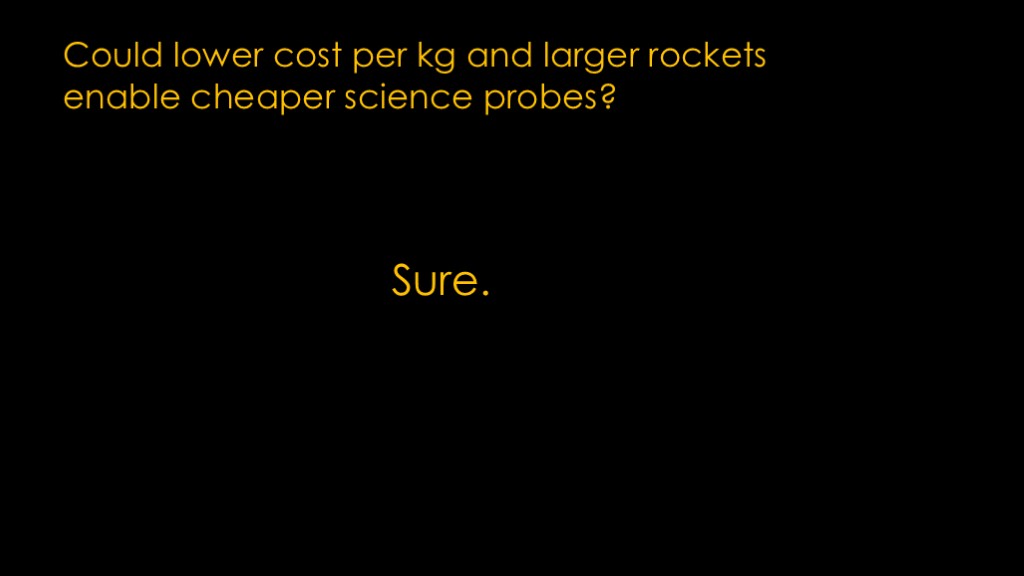
Sure. But launch cost is only one factor in science probe cost.
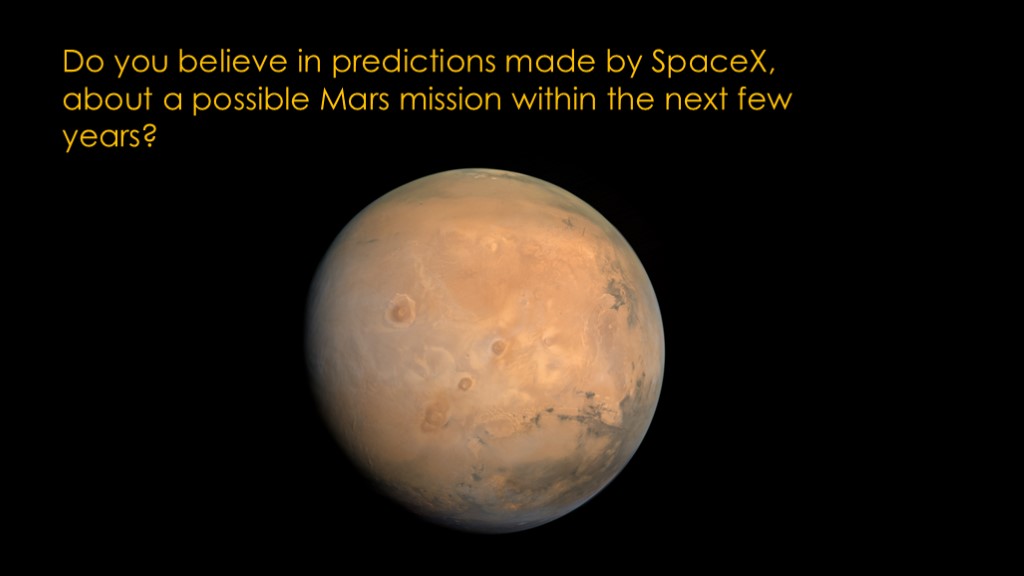
Depends on what they mean by "mars mission"...
With their current starship build rate, if they start getting successful missions there's no reason they couldn't do some sort of mission to Mars.
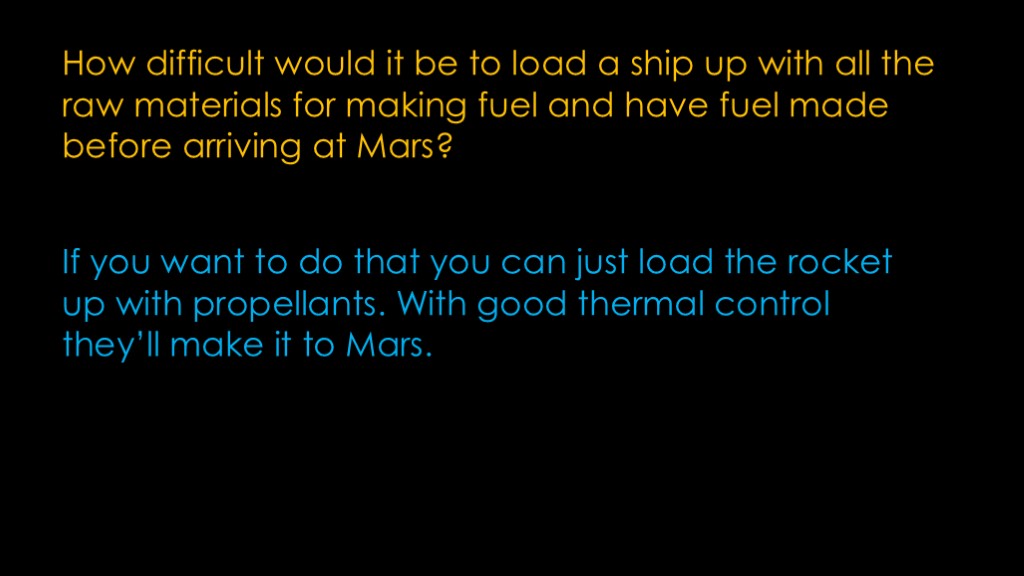
If you want to do that you can just load the rocket up with propellants. With good thermal control they'll make it to Mars.
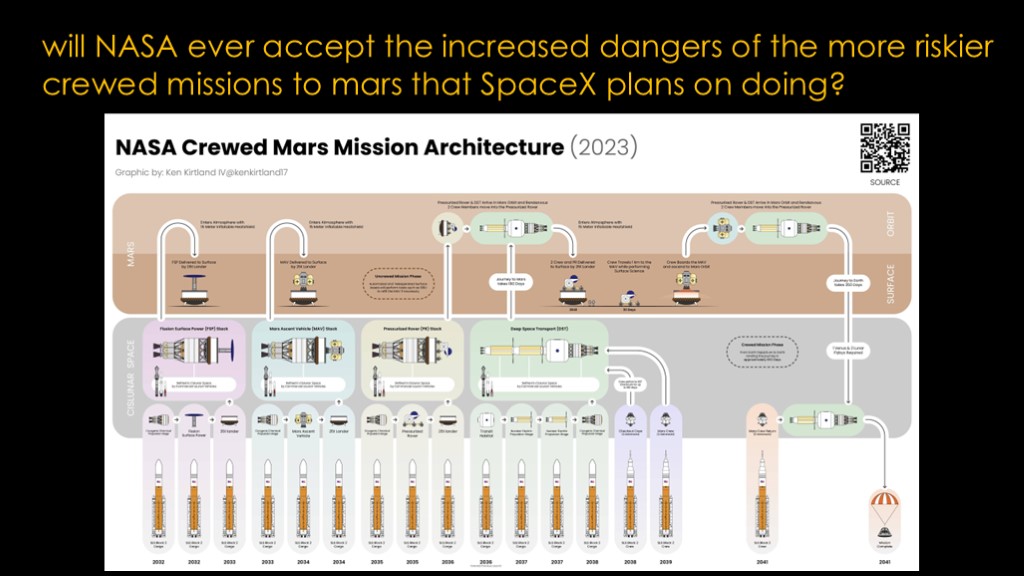
I don't think we have good details on either the SpaceX architecture or the NASA architecture so it's very hard to make any comparisons between them.
I guess it's probably true that the NASA plans are less risky because it's unlikely that NASA will ever have the budget to dedicate 16 SLS launches to a single trip.
Also note that NASA happily flew astronauts on a shuttle that they didn't have any real estimates of risk on. Later analysis showed that the risk of crew loss ranged from (based on my memory) 1 in 12 early in the program up to only 1 in 90 at the end.
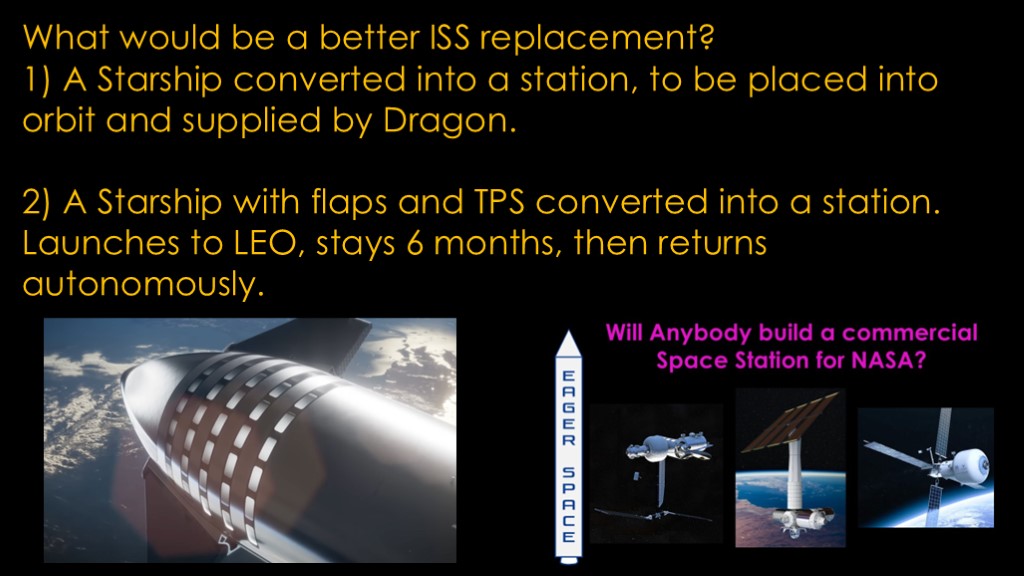
At some point I'll do a video on this, but I'll give you the quick answer now.
The problem with #1 is that the business model is poor. You have an expensive asset that you put in space and you need to use expensive Dragon flights to get people and supplies there. Very high ongoing costs and you pay those no matter how big the market is.
With #2 you need to invest the money to build the starship, but then you get a single launch when you have the customers that make it worthwhile to fly. Once a year for a month, fine. 6 times a year for a month each, fine. Much easier to scale and easier to make money on.
There's a hybrid where you launch starship with all the stuff you need and then just transport true. Likely cheaper than dragon supply flights.
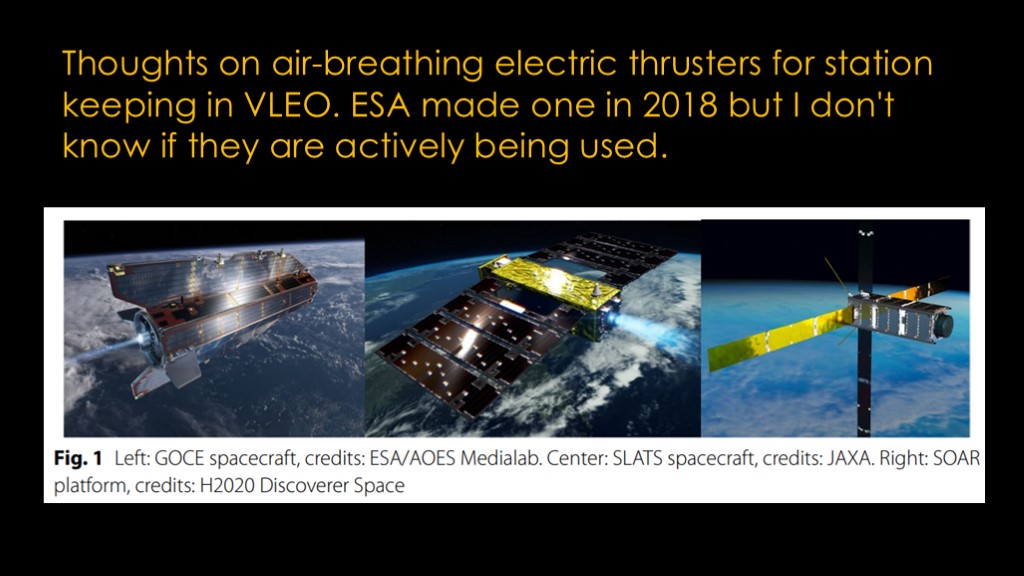
I think it's a fascinating idea, and it's on my list to talk about.
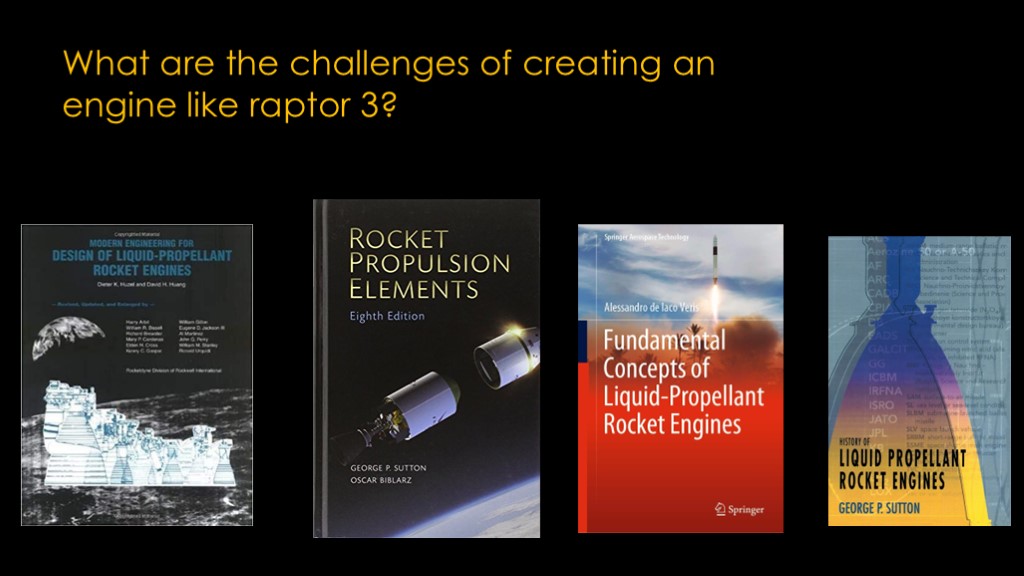
Here are a few small references to get you started...

If we look at commercial launches for 2024, ULA managed 5.
RocketLab flew 14 orbital missions on Electron, a good number but less total payload than 1 Falcon 9 flight.
And SpaceX comes in at 45 commercial launches.
SpaceX has been a virtual monopoly for the past few years already, helped out by the delays on both Vulcan and Ariane 6.
In that time, they have raised their prices for a standard GTO launch from about $60 million all the way up to $70 million. Their competition in the NSSL launch arena has forced ULA to bid Vulcan much cheaper than Atlas V and Delta IV Heavy, saving the government quite a bit of money.
And they are launching huge amounts of small satellites on their rideshare programs.
It's fair to say that they haven't done the things we would generally associate with a monopoly.
Having said that, I'm not a fan of monopolies in general because I think competition is good, but as soon as SpaceX started reusing boosters it was clear that they had natural monopoly power and the starlink flight rate has just sealed it.
What will happen there?
Right now both NASA and DoD are heavily dependent on SpaceX and in the short time frame I don't see that changing. In the long term, maybe that changes.
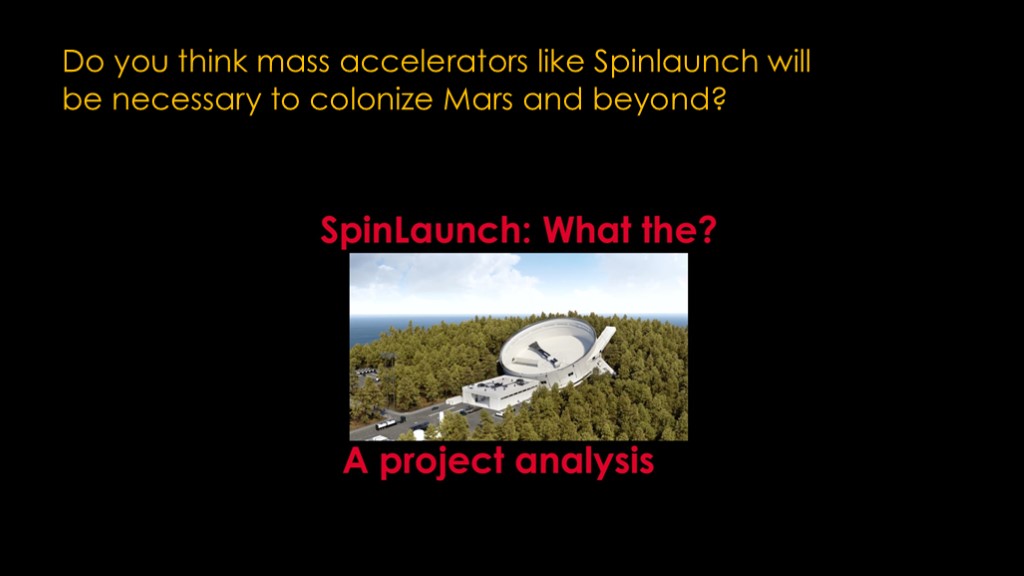
I don't think spinlaunch or other space gun approaches have much going for them. The basic problem is that you have to do special work on your payload - read that as "spend more money" - to be able to launch on a system like that, and that's wasted time and effort.
So much easier just to build your payloads so that they can fly on existing chemical rockets.
Another issue is that they are projects that require a ton of investment with the idea that sometime in the future you can make that money back by launching a lot. I don't see how you predict what your costs are and what the rest of the industry costs will be with enough accuracy to be confident with the investment.

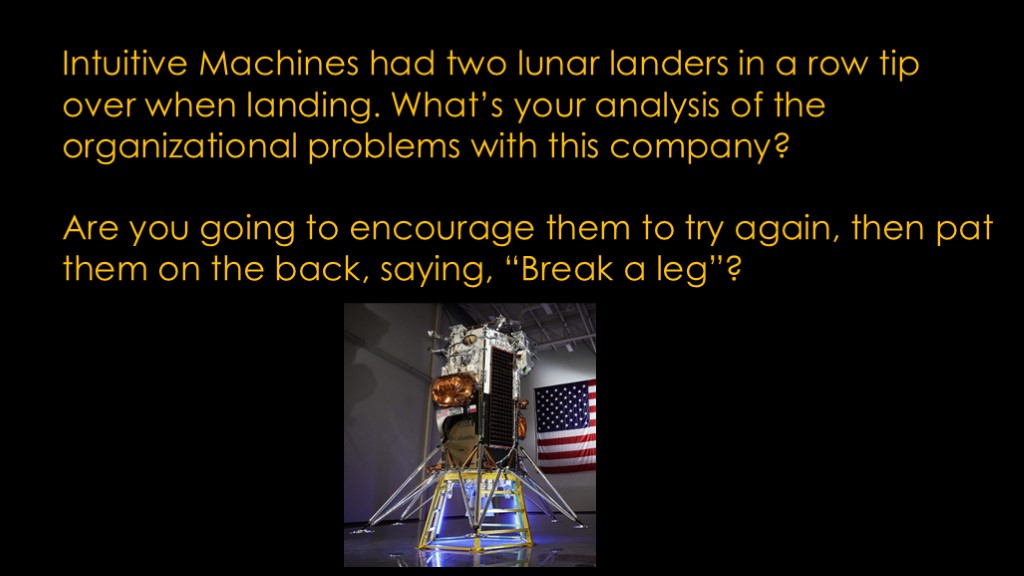
I don't have any specific insight into the company so I won't comment on that.
I will note that the CLPS task orders were pretty light on funding initially and that made it hard to believe that there was enough money there to do a reasonable job. That seems to have improved with recent awards.
My only design comment is that their design is pretty tall and the legs aren't very wide which makes it harder to stay upright, though I have no knowledge of what the maximum tip angle is.

7.
I'm old.
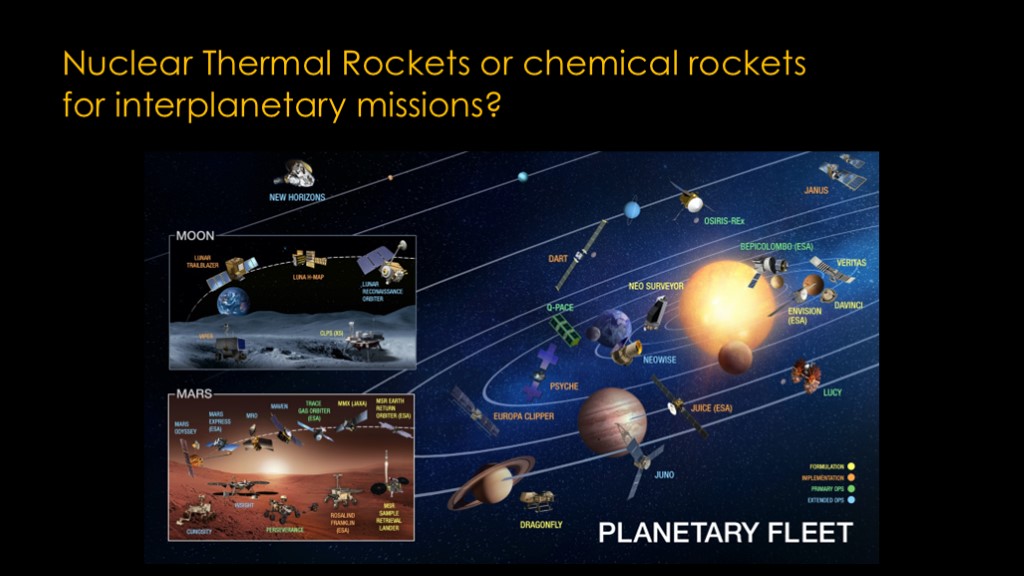
There are no functional nuclear thermal rockets at this point, so the options are chemical rockets or ion/electric thrusters. The tradeoffs for the latter two depend on the mission; sometimes chemical thrusters are better, sometimes ion/electric thrusters.
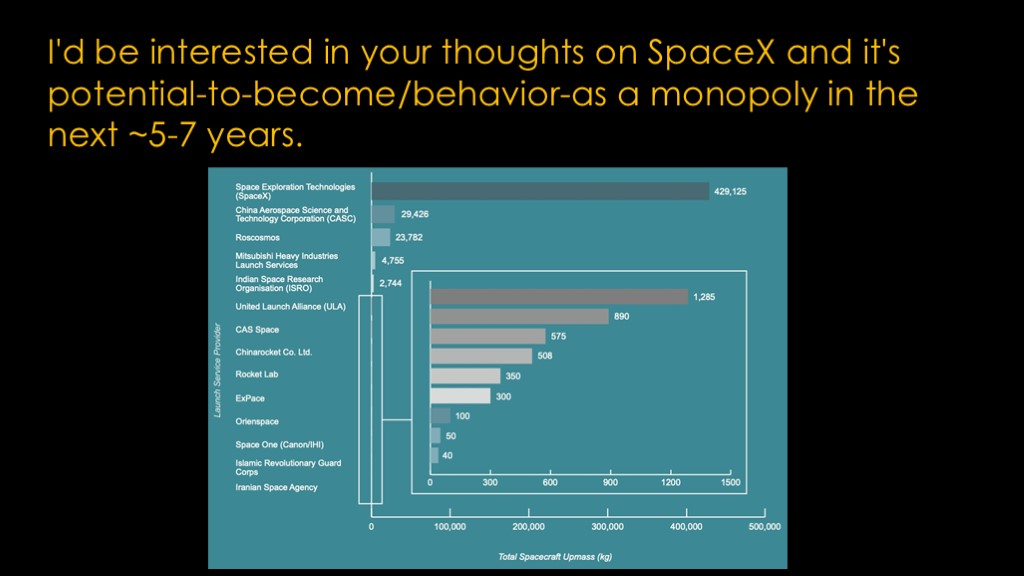
This question also asked about people who are worried about SpaceX becoming a monopoly.
It's pretty clear these people aren't paying much attention. SpaceX is already a monopoly. They totally dwarf everybody else in terms of payload to orbit.
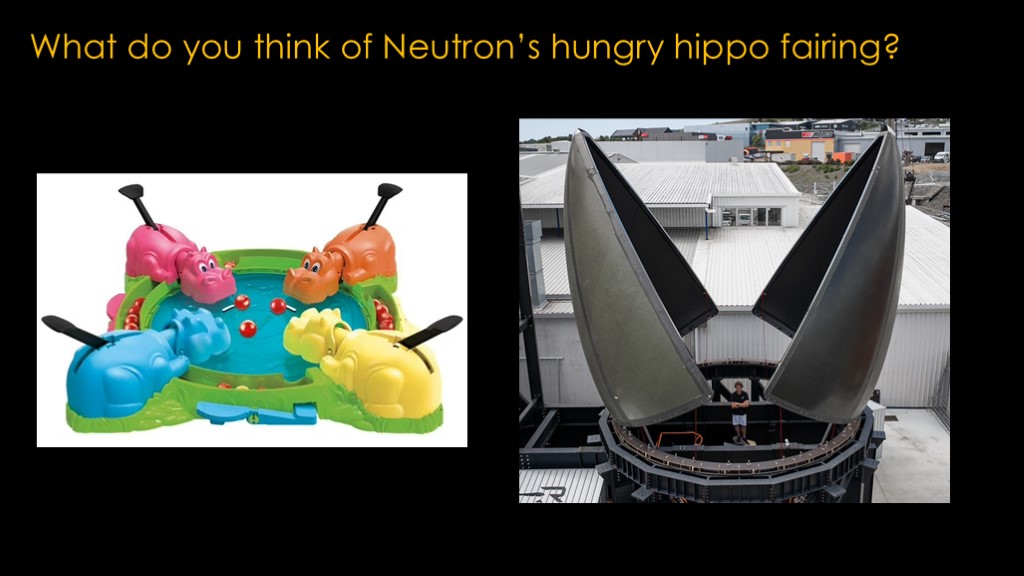
The whole buried second stage is an elegant design. You tether the fairing to the first stage and your recovery architecture is a lot easier. You do pay a mass penalty with a bigger first stage, but you make the second stage lighter and second stage mass matters more than first stage mass.
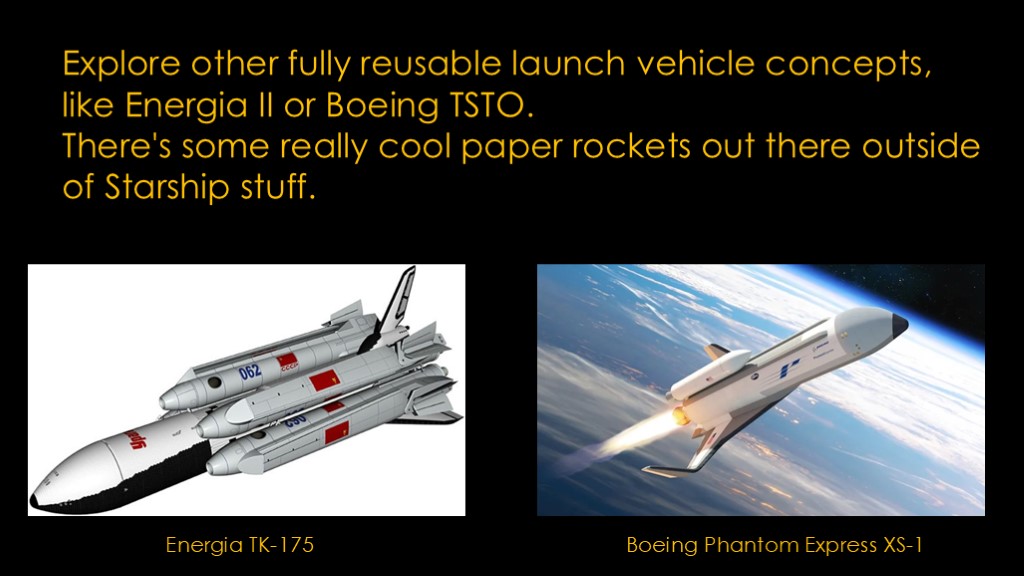
I looked at the Energia II stuff recently and I don't think there's enough information there to talk about, at least not in English, and my Russia is nonexistent.
The only Boeing project I know of was the Phantom Express. Boeing won a design competition in 2017 over Masten Space Systems and Northrop Grumman to build this flyback booster concept, and less the 3 years later decided to pull out of the program.
It is rumored that Boeing never wanted to build the vehicle and put in a low bid so that they could prevent Masten or Northrop Grumman from building something that would compete with ULA.
I put in a freedom of information act to try to determine what actually happened, but it wasn't practical to scope the request down far enough to make it workable.
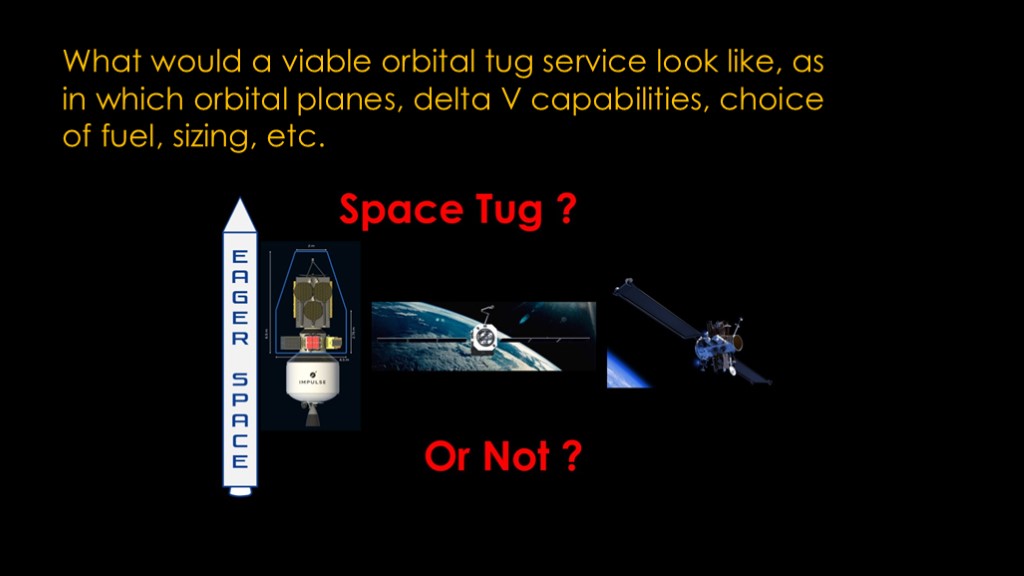
I generally don't see much utility for space tugs.
The problem is that the delta v between most useful orbits is high and that makes it really hard to make a space tug work, plus you need to refuel it. And I think it's very easy to end up with a tug in orbit and nobody interested in using it.
Kick stages make a lot more sense.
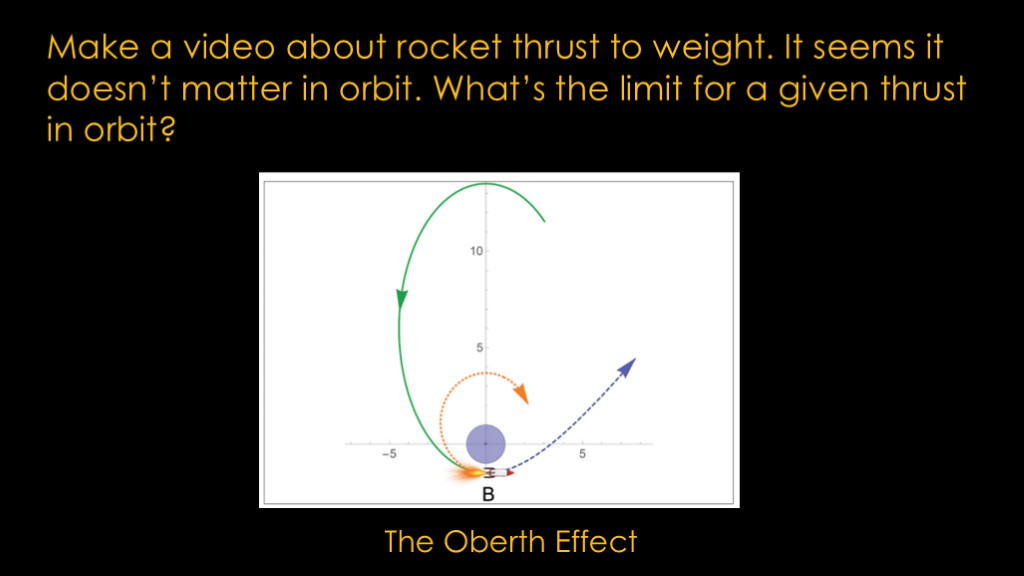
That's on the list to talk about, but it's going to require me to figure out how to talk about the Oberth effect, and I haven't come up with a good explanation yet.
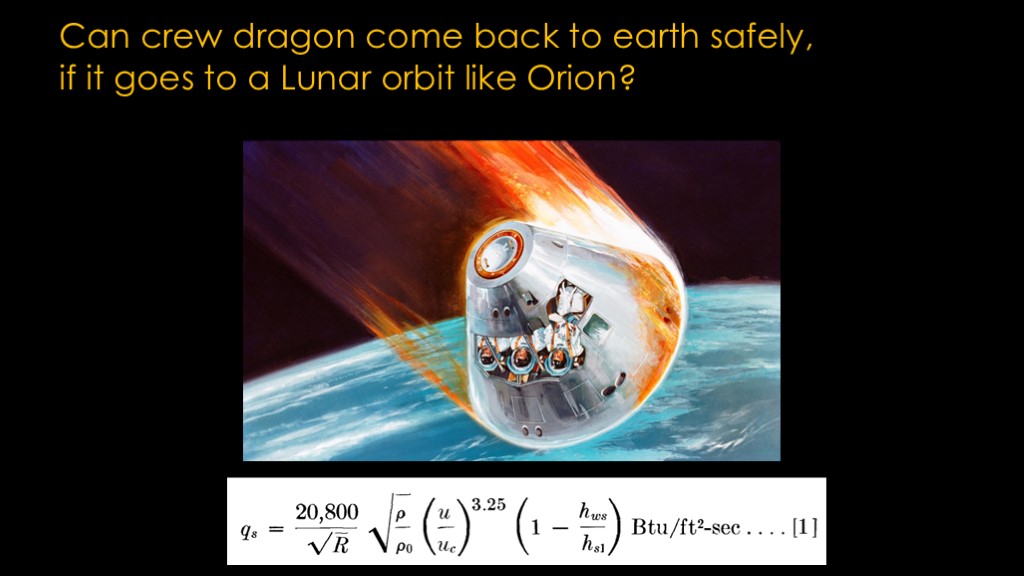
Crew dragon reentry speed is about 28,000 km/h (17,500 mph), while lunar return is 40,000 km/h (25,000 mph)
The kinetic energy goes up with the square of the velocity, so the kinetic energy of lunar return is about double that of low earth orbit return.
It's actually worse than that - when it comes to reentry heating it scales with roughly the cube of the velocity, so it's close to 3 times when it comes to heating.
Dragon doesn't have a heat shield designed to deal with that amount of heating.

If you enjoyed this video, listen to this...